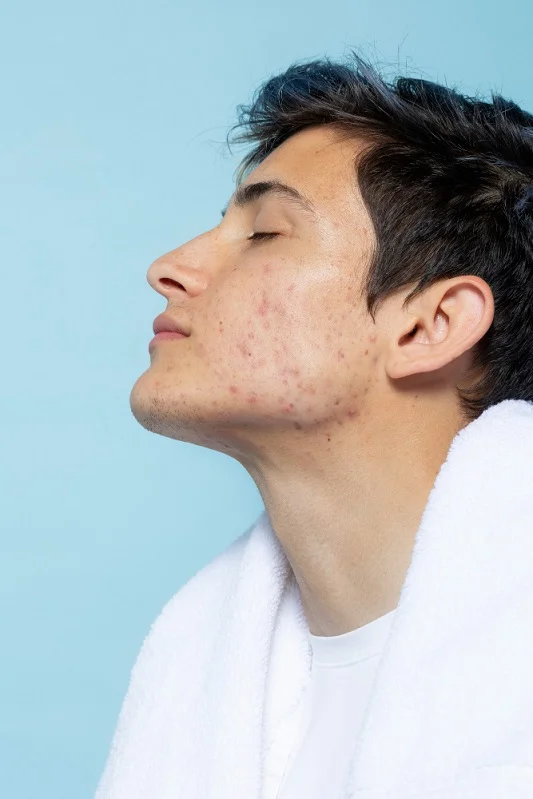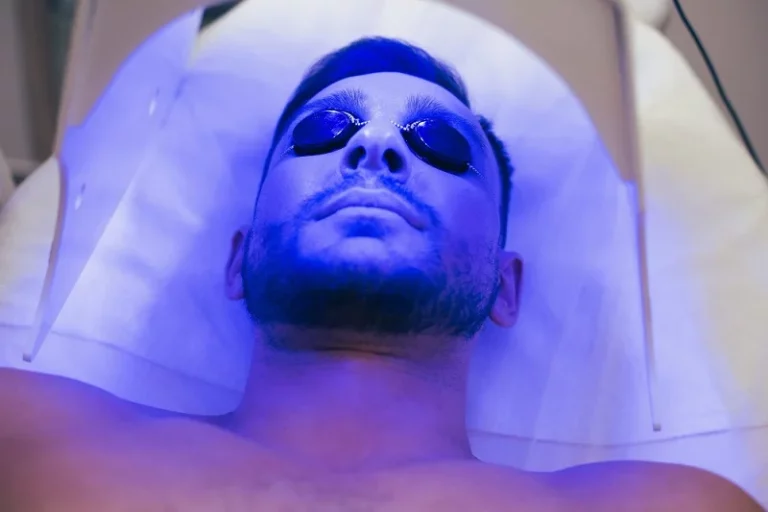Cryotherapy vs. Ice Baths: The Ultimate Comparison
Have you ever wondered about the concept of cryotherapy versus ice baths and the benefits of cold exposure? Exposure, such as taking a cold plunge or using cryotherapy, can significantly impact your skin temperature. However, it’s essential to be cautious and avoid hypothermia when engaging in these practices. If you’re seeking effective recovery and performance enhancement methods after an intense workout, understanding the key differences and advantages between these popular techniques is essential. Both cryotherapy and ice baths involve subjecting your body to cold temperatures, but what is the difference between them? Let’s compare the two at our wellness center.
Cryotherapy, available at our wellness center, utilizes extremely low temperatures to provide therapeutic benefits for your brain health. While ice baths require immersing your body in cold water, cryotherapy offers a more efficient and convenient way to experience the rejuvenating plunge. The contrasting approaches of shock therapy, cold plunge centers, and ice packs may leave you questioning which suits you.
With cryotherapy gaining popularity due to its targeted and efficient cooling process, it’s essential to evaluate whether it surpasses the traditional method of ice baths. One alternative to ice baths is the cold plunge, which involves submerging oneself in a shockingly cold chamber. By delving into the nuances of each technique, such as bath, cryo chamber, cold plunge, and cryotherapy treatment, you can make an informed choice that aligns with your specific needs and preferences.
In the following sections, we will explore the distinct aspects of cryotherapy, including the cold plunge, chamber, and ice baths, allowing you to weigh their pros and cons. So, let’s dive deeper into this chilly comparison and discover which cryotherapy treatment suits you best, whether it’s a cold plunge, ice bath, or chamber.
The chamber is a popular facility for athletes and those seeking recovery. One of the most effective recovery methods is the cold plunge, cryo, or ice bath.
Key Differences: Cryotherapy vs. Ice Baths
Cryotherapy and ice baths are two popular methods used for cold therapy, but they differ in several key aspects. While cryotherapy involves a quick plunge into freezing temperatures, ice baths involve immersing the body in cold water. Understanding the differences between an ice bath and a cold plunge can help you choose the most suitable option.
Cryotherapy involves using liquid nitrogen or refrigerated air to create freezing temperatures, while ice baths use cold water.
The primary distinction between cryotherapy and ice baths is how they deliver cold temperatures. Cryotherapy involves a quick plunge into freezing temperatures, while ice baths require submerging the body in icy water. Cryotherapy employs liquid nitrogen or refrigerated air to generate freezing conditions, such as ice baths or cold plunges. This method, known as the cold plunge or ice bath, allows for rapid body cooling by exposing it to extremely low temperatures. On the other hand, ice baths rely on submerging the body in cold water to induce a cooling effect. This involves taking a plunge into the icy water.
Cryotherapy sessions typically last only a few minutes, whereas ice bath durations can vary from 10 to 20 minutes.
Cryotherapy, including the cold plunge, offers a significant advantage over ice baths when considering time commitment. Cold plunge or cryotherapy sessions generally last just a few minutes, usually 2 to 5 minutes per session. This short duration makes the cold plunge an attractive option for individuals with busy schedules or those seeking quick recovery after intense physical activity. In contrast, depending on personal preference, ice bath durations can range from 10 to 20 minutes or even longer.
Cryotherapy provides localized cooling, targeting specific body areas, while ice baths provide overall body immersion.
Another crucial difference between cryotherapy and ice baths is their approach to cooling the body. Cryotherapy focuses on localized treatment by directing freezing temperatures toward specific body areas requiring attention. This targeted approach allows athletes and individuals recovering from injuries to address specific problem areas effectively. Conversely, ice baths offer overall body immersion, providing a more generalized therapeutic experience that affects multiple muscle groups simultaneously.
The temperature in cryotherapy chambers can reach as low as -200°F (-130°C), whereas ice bath temperatures range from 50°F (10°C) to 59°F (15°C).
The range of cold temperatures experienced during cryotherapy and ice baths also sets them apart. Cryotherapy chambers can reach astonishingly low temperatures, plummeting to -200°F (-130°C). These extreme conditions trigger a physiological response in the body, promoting various benefits such as reduced inflammation and enhanced recovery. In contrast, ice bath temperatures typically range from 50°F (10°C) to 59°F (15°C), which still provide a significant cooling effect but are not as extreme as cryotherapy.
Effectiveness of Cryotherapy for Recovery and Performance
Cryotherapy, a popular treatment among athletes, has gained attention for its potential benefits in enhancing recovery and performance. This article explores the effectiveness of cryotherapy in reducing inflammation, accelerating recovery time, and improving athletic performance, pain management, and overall well-being.
Cryotherapy has been shown to reduce inflammation and muscle soreness following intense physical activity effectively. Cryotherapy triggers a natural response known as vasoconstriction by subjecting the body to freezing temperatures. This constriction of blood vessels helps to minimize swelling and inflammation in the muscles, allowing athletes to recover more quickly.
Athletes often turn to cryotherapy to accelerate recovery between training sessions or competitions. The initial shock response experienced during cryotherapy activates the body’s fight-or-flight mechanism. As a result, endorphins are released, contributing to pain relief and an overall sense of well-being. Cryotherapy stimulates collagen production, which aids in tissue repair and can help prevent future injury.
Cryotherapy may also positively impact athletic performance by enhancing blood circulation and oxygen delivery throughout the body. Improved circulation allows nutrients and oxygen to reach muscles more efficiently, increasing energy levels and improving endurance. Athletes who incorporate regular cryotherapy sessions into their training routine may experience enhanced performance during competitions.
Beyond its effects on recovery and performance, cryotherapy offers additional health benefits such as pain management and overall well-being. The extreme cold temperatures involved in cryotherapy can numb nerve endings temporarily, providing relief from chronic pain conditions such as arthritis or fibromyalgia. The release of endorphins during cryotherapy contributes to an improved mood and reduced stress levels.
While there are numerous advantages associated with cryotherapy for recovery and performance enhancement, it is essential to note that individual experiences may vary. Factors such as an athlete’s specific needs or pre-existing conditions can influence the effectiveness of cryotherapy. Moreover, cryotherapy requires a time investment as multiple sessions are often recommended to achieve optimal results.
Exploring Whole Body Cryotherapy and How it Works
Whole-body cryotherapy is a cutting-edge treatment that involves exposing the entire body to freezing temperatures in a specialized chamber or cabin. This therapy has recently gained popularity as a holistic approach to recovery and wellness.
During a cryotherapy session, the skin’s surface temperature rapidly drops, triggering various physiological responses. Exposure to extreme cold stimulates vasoconstriction followed by vasodilation, which helps flush out toxins from tissues and improves nutrient delivery. This process can have several beneficial effects on the body’s systems.
One of the primary benefits of whole-body cryotherapy is its impact on blood flow. As the cold temperature constricts blood vessels, blood is redirected from peripheral tissues towards vital organs. Once the session ends and the body warms up again, vasodilation occurs, leading to increased blood flow. This improved circulation can help reduce inflammation, promote healing, and enhance cardiovascular health.
The immune system also receives a boost from whole-body cryotherapy. The sudden exposure to extreme cold activates the release of cytokines and other immune cells that play a crucial role in fighting off infections and diseases. Regular cryotherapy sessions can strengthen the immune system, making individuals more resilient against common illnesses.
Not only does whole-body cryotherapy benefit internal systems, but it also has positive effects on the skin. The intense cold causes blood vessels near the skin’s surface to constrict rapidly before dilating upon warming up again. This process helps improve oxygenation and nutrient supply to the skin cells while removing waste products effectively. Consequently, many people report smoother skin texture and an overall improvement in their complexion after undergoing regular cryo sessions.
Whole-body cryotherapy provides an invigorating experience for both mind and body due to the release of endorphins. These “feel-good” hormones can positively impact mood, reducing stress and anxiety. Many individuals also report feeling energized and rejuvenated after a cryotherapy session, making it an excellent option for those seeking a natural pick-me-up.
Research Studies: Evaluating the Efficacy of Cryotherapy
Several research studies have investigated the effects of cryotherapy on muscle recovery and performance.
A study published in the Journal of Athletic Training found that cryotherapy significantly reduced muscle soreness after exercise. Participants who underwent cryotherapy sessions reported a noticeable decrease in post-workout muscle soreness compared to those who did not receive any cold treatment. This suggests that cryotherapy could be an effective method for alleviating muscle discomfort and promoting faster recovery.
Another study published in the International Journal of Sports Medicine reported improved sprint performance following cryotherapy sessions. Athletes who underwent cryotherapy treatments showed enhanced speed and power during subsequent sprint exercises. The cold therapy positively impacted their muscular performance, allowing them to generate more force and achieve better results.
While these studies demonstrate promising outcomes, it is essential to note that more research is needed to understand the long-term effects and optimal protocols for cryotherapy fully. The current body of research provides valuable insights into the potential benefits of this treatment, but further investigation is required to establish definitive guidelines.
Cold therapy, such as cryotherapy, constricts blood vessels in the treated area, which helps reduce inflammation and swelling. Decreasing blood flow temporarily can also minimize tissue damage caused by intense physical activity or injury. However, consulting with a medical provider before cold treatment is crucial, as individual circumstances may vary.
To determine the effectiveness of cryotherapy, future studies should consider factors such as treatment duration, frequency, and temperature settings. Researchers should explore different populations (e.g., elite athletes versus recreational exercisers) to assess how individuals respond to this therapy.
Ice Baths for Recovery and Performance Enhancement
Ice baths, also known as cold-water immersion, have been used for decades by athletes to aid recovery. The practice involves immersing the body in cold water after an intense workout or competition. This recovery method has gained popularity among fitness enthusiasts due to its potential benefits in reducing inflammation, decreasing muscle damage, and alleviating post-exercise soreness.
One of the primary reasons athletes turn to ice baths is their ability to reduce inflammation. Intense workouts can lead to muscle micro-tears, resulting in inflammation and discomfort. By immersing themselves in cold water, athletes experience vasoconstriction, which helps limit blood flow to damaged tissues and reduces swelling. This process aids the body’s natural healing response and promotes faster recovery.
In addition to reducing inflammation, ice baths can help decrease muscle damage caused by intense exercise—muscles subjected to strenuous activity experience microscopic tears contributing to delayed onset muscle soreness (DOMS). Cold-water immersion has been shown to minimize this damage by constricting blood vessels and limiting the release of inflammatory substances into the muscles.
Post-workout soreness is a common complaint among athletes, but ice baths relieve this discomfort. The cold temperature numbs nerve endings and provides temporary pain relief. Furthermore, the constriction of blood vessels helps flush out metabolic waste products that accumulate during exercise, aiding in faster recovery between training sessions.
Ice baths are often used as part of contrast therapy, where athletes alternate between hot and cold treatments for enhanced recovery benefits. Contrast therapy involves switching between hot and cold temperatures to promote circulation and reduce inflammation more effectively than using either treatment alone. Athletes may start with a hot bath or shower before submerging themselves in an ice bath for a few minutes. This alternating exposure improves blood flow regulation while reaping cold immersion’s anti-inflammatory effects.
While ice baths are commonly used for muscle recovery, it’s important to note that they should be approached with caution. Prolonged exposure to cold water can lead to hypothermia, where the body loses heat faster than it can produce. Athletes should limit their ice bath sessions to 10-15 minutes and closely monitor their body temperature.
Ice baths can be performed using various methods. Some athletes prefer traditional ice baths, filling a tub or container with cold water and adding ice packs or cubes to achieve the desired temperature. Others may opt for specialized equipment, such as an ice barrel for cold-water immersion.
Comparing Cryotherapy and Ice Baths: Which is Better?
Both cryotherapy and ice baths offer benefits for recovery and performance enhancement; however, their effectiveness may vary depending on individual preferences.
Cryotherapy provides targeted cooling with shorter exposure times. This method uses frigid temperatures to stimulate the body’s natural healing processes. By exposing specific areas or the whole body to subzero temperatures for a short duration, cryotherapy aims to reduce inflammation, alleviate pain, and promote muscle recovery. The controlled application of cold can constrict blood vessels and decrease metabolic activity in the treated area, which may aid in reducing swelling and speeding up recovery.
On the other hand, ice baths offer overall body immersion with longer durations. This traditional method involves submerging oneself in a tub filled with ice-cold water for a set period. The low temperature of the water helps constrict blood vessels throughout the body, reducing inflammation and muscle soreness. Ice baths are often favored by athletes who engage in intense physical activities, providing widespread coverage for multiple muscles simultaneously.
Choosing between cryotherapy or ice baths depends on personal preference, availability, convenience, and desired outcomes. Some individuals may find cryotherapy more appealing due to its targeted approach and shorter exposure times. Others may prefer ice baths because they offer full-body immersion that can be more relaxing after a strenuous workout.
Consulting with a healthcare professional or sports therapist can help determine which method may be more suitable based on individual needs. These experts can assess factors such as injury severity, training goals, medical conditions, and personal preferences to guide individuals toward the most appropriate recovery strategy.
Making an Informed Choice – Cryotherapy or Ice Baths?
Now that we have explored the key differences, effectiveness, and research studies surrounding cryotherapy and ice baths, it’s time to make an informed choice. Both methods have their merits, but ultimately, the decision depends on your personal preference and goals.
If you’re looking for a quick and convenient option for targeted cold therapy, cryotherapy may be the way to go. Its ability to reduce inflammation and promote muscle recovery has gained popularity among athletes and fitness enthusiasts. On the other hand, ice baths can offer similar benefits if you prefer a traditional approach with a more immersive experience.
Before deciding, consider accessibility, cost, and individual comfort levels. Remember that what works for one person may not work for another. So experiment with both methods, listen to your body’s response, and choose the best option.
FAQs
How often should I use cryotherapy or ice baths?
The frequency of cryotherapy or ice baths depends on your training intensity and individual response. Start with 1-2 sessions per week and adjust according to how your body feels.
Are there any risks associated with cryotherapy or ice baths?
While cryotherapy and ice baths are generally considered safe when used correctly, some risks are involved. Extreme cold temperatures can lead to frostbite if precautions are not taken during cryotherapy sessions. Similarly, prolonged exposure to ice baths can cause skin damage if proper care is not exercised.
Can I combine cryotherapy and ice baths for enhanced recovery?
Absolutely! Some athletes and individuals prefer to alternate between cryotherapy and ice baths to maximize the benefits of cold therapy. This approach allows for a versatile recovery routine that targets different areas of the body.
Are there any alternatives to cryotherapy and ice baths?
Yes, there are alternative methods for muscle recovery, such as contrast therapy (alternating between hot and cold treatments), foam rolling, massage therapy, and compression garments. These options may suit individuals who prefer non-cold-based recovery techniques or have specific needs or limitations.
Consider a healthcare professional before incorporating any new recovery method into your routine, especially if you have underlying health conditions or concerns.






